
Tell us what you need to find a matching loft conversion specialist

Get free quotes from professionals near you

Compare offers and choose the one that best matches your need
- Householdquotes.co.uk
- Conservatory
- Lean to Conservatory
Lean To Conservatory: Your Complete Guide

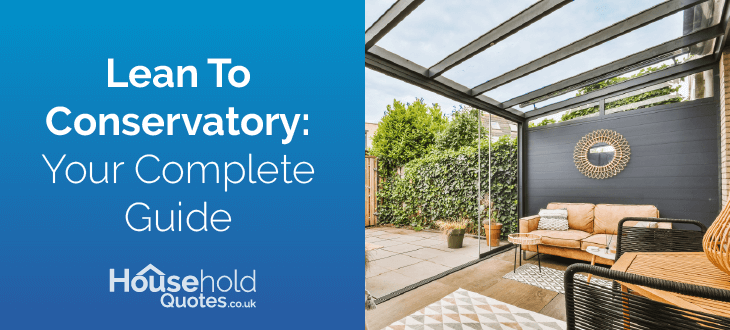
- In the UK, a lean to conservatory is a leading option for affordable sunroom extension, especially if you have space and budget restrictions.
- Based on design, material, size, and location, expect to pay between £8,000 and £15,000 for a fully fitted lean to conservatory installed by an expert.
- If executed correctly, lean to conservatories can be a low-cost way to increase property value by 7% and even exceed the initial investment.
Lean to conservatories are a great way to add functional space to your home while also adding charm and elegance. They seamlessly blend outdoor beauty with indoor comfort.
According to DauntseyBuildingPlastics’s article “Benefits of Lean-To Conservatories,” these conservatories are easy to install due to their simple design and are also adaptable and versatile, offering a range of styles to choose from based on your unique needs, preferences, and budget.
Whether you prefer a classic or contemporary design, lean to conservatories that can be customised to suit your taste and requirements. When considering a lean to conservatory for your home, planning and choosing the option that meets your needs and budget is important.
This article aims to help you explore the many benefits of these beautiful structures and provide expert advice on selecting the design materials and installation team.
If you’ve already decided on your lean to conservatory design and are looking for prices for your specific sizes, compare quotes.
Use our form to get four free quotes from skilled professionals to find the best solution and price for your lean-to-conservatory project. It takes only a minute and will save you time and headaches.
- Describe your needs
- Get free quotes
- Choose the best offer
It only takes 30 seconds

What are Lean-to conservatories?
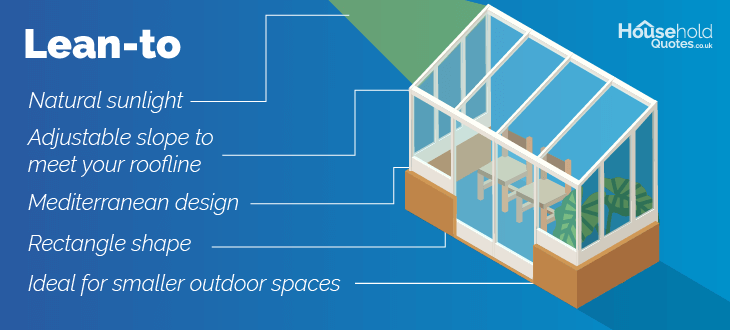
Lean-to conservatories are square or rectangular extensions that attach to the side of your house in a leaning position.
They can be fitted in various sizes for an elegant living space conversion with style and functionality. These conservatories are modern, simple, practical, and cheaper than other styles, making them a highly sought-after option for many UK homeowners.
According to research conducted by Liniar, the popularity of lean to conservatories has surpassed that of Victorian ones based on several factors:
- Change in cause: People are more willing to extend because of high property prices, changes in taste and the desire to have more visibility of the outdoors from their properties.
- Change in weather: Over the past 30 years, rainfall in the UK has increased up to 20%. This change has made it challenging for those who enjoy spending time outdoors, as the increased rain limits outdoor activities.
- Change in space: With living spaces becoming smaller in the UK, glazed extensions like lean-tos have become popular. They allow more light into spaces and are more compact than traditional conservatories, making them suitable for homeowners with limited space who wish to brighten their homes.
Adding a lean-to conservatory to your home connects indoor and outdoor living spaces. Its unique single-sloping roof and efficient use of space make it adaptable to various home styles, especially those with limited space.
This type of conservatory can serve multiple purposes, from a peaceful retreat to a lively entertainment area or a functional home office. It increases the property's aesthetic appeal and value and floods your space with natural light.
Installing a lean to conservatory doesn’t require planning permission. However, ensure you adhere to size limitations. It’s always wise to consult with an architect or designer who is up-to-date with the rules.
Lean to conservatory roof options
There are different options for roofing materials, and the one you choose is based solely on your design preference and budget. Choosing the right roof for your lean-to conservatory is key in defining its functionality, style, and integration with your home.
The main roofing materials are glass, polycarbonate, and solid tiles, each offering unique benefits and considerations.
Let’s explore them from cheaper to more expensive.
Polycarbonate roof
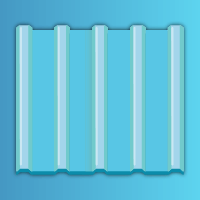
Polycarbonate roofing is a great and affordable alternative to glass for lean to conservatories. It is lightweight and cost-effective, which is why it is popular.
According to Smart Conservatory Solutions, a conservatory roof insulation specialist in the UK, over 95% of conservatories built in recent years have polycarbonate roofs.
HomeLogic says polycarbonate roofs are 2-3 times cheaper than glass roofs, making them ideal for those with a limited budget.
There are various options and advantages for polycarbonate roofings, so let’s explore them.
Polycarbonate roof options
- Thickness: According to Roofingmegastore UK, polycarbonate roof sheets for conservatories should be 25mm, 32mm, or 35 mm thick, suitable for frequent residential use.
- Colour: Polycarbonate roofing is available in various colours, including clear, bronze, opal, and heatguard, to complement your conservatory's colour.
- Lightweight and cost less: Polycarbonate is a lighter and cheaper alternative to glass, resulting in cost savings for materials and labor.
- Insulate well: Polycarbonate roofing insulates well, making it ideal for conservatories and energy efficiency.
- Impact resistance: Polycarbonate outlasts glass in harsh weather and accidental damage, making it ideal for longer-lasting conservatory roofing.
- Lacks clarity: This roof type lacks the clarity and seamless outdoor integration of glass, but it’s still visually pleasing and functional. Choosing between quality and saving money is a compromise.
- Discolour over time: Weather exposure can cause polycarbonate roofs on conservatories to discolour, impacting the conservatory’s appearance and the amount of natural light that enters it.
- Limited natural light: While polycarbonate roofs are cheaper, they may not offer the same level of natural lighting as glass roofs.
Polycarbonate roofing is a strong and energy-efficient option for lean to conservatories, providing good thermal efficiency and practicality. It's more affordable than glass but less visually appealing.
Before deciding, you should prioritise your preferences and needs.
In summary, polycarbonate is a cost-effective and long-lasting choice if seeking efficient living space expansion on a budget.

Glass roof
Glass roofs are a popular choice for lean-to conservatories as they flood the space with natural light and enhance the atmosphere.
Thanks to several key advancements, they offer an ideal mix of beauty and functionality. Let’s explore their advantages.
- More natural light: Glass roofs flood your conservatory with sunlight, making your room bright and airy.
- Visual and energy benefits: They look appealing and bring the outdoors to you under one roof. They also help keep the room warm or cool without increasing energy bills.
- Modern upgrades and safety: If you have the budget, upgrading to advanced coatings means less cleaning and strong glass reduces the risks of injury if broken.
- Customisable design: You can choose from different colours and shapes to make the conservatory look just how you like it.
- Maintenance: Glass roofs, although beautiful, require frequent cleaning as dust deposition can defeat their purpose. They are also slightly weaker than traditional roofs, making them more vulnerable to intruders.
- Leakages: Incorrectly installed glass sheets can lead to leakages during rain or dust perforation during dry weather. It’s important to seek expert advice to choose the best roof signs for the available space and securely install the glass sheets to avoid such problems later.
- Glare issues: Glass conservatory roofs can be uncomfortable to sit in during sunny days due to the sun’s glare. However, Ultraframe Trade suggests upgrading to glazing with a low level of light transmission and higher levels of solar rejection, which can solve this problem.
Lean to conservatory glass roofs don’t just maximise the light in your space; they provide functional benefits like thermal insulation and can be low maintenance with added upgrades if you have the budget.
So, if you’re looking for a practical option that’s still reasonably affordable, you can opt for the beauty of the glass roof.
Solid tiled roof
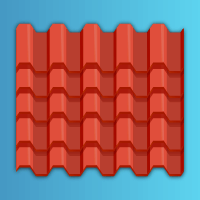
Solid tiled roofs are a durable and stylish roofing option for lean to conservatories, blending classic aesthetics with practicality.
Here's a closer look at their characteristics, types, advantages, and considerations:
Solid-tiled roof types
- Concrete tiles: These are popular, durable, cost-effective, and available in various colours and finishes.
- Slate tiles: They are durable, weather-resistant, and unique, making them a popular choice for their natural beauty and durability.
- Synthetic tiles: Lightweight options mimic slate or concrete tiles but are more versatile and eco-friendly.
Solid tiled roofs work well with lean-to conservatories attached to modern and traditional homes. They match the existing house roof, ensuring a cohesive aesthetic that enhances the property's overall appearance.
- Better insulation: Solid-tiled roofs insulate better and potentially reduces energy cost
- Look good: They have a timeless look that matches the existing roof and improve the conservatory’s design
- Lessen outside noise: The strong build lessen outside noise like rain, for a peaceful indoor environment
- Strong: Tiled roofs last longer as they’re more weather resistant and requires less maintenance
- Reduced natural light: A solid roof may reduce the amount of natural light that enters the conservatory, which may require additional interior lighting.
- Roof frame fixes: The weight of tiled roofs requires evaluating the conservatory’s ability to support the load.
- Cost: Tiled roofs cost more because of the price of the materials and labour for installation.
- Difficult to install: Fitting a solid tiled roof is a complex, time-consuming process that requires skilled installation to ensure proper fit and finish.
- Planning Permission: Depending on local rules and the extent of the alterations, planning permission may be necessary for solid roof changes.
Tiled roofs combine charm and functionality for lean-to conservatories. They offer insulation, durability, and aesthetic benefits.
Consider natural light, structural requirements, cost, and installation process before choosing.
The roof is an essential consideration when creating your dream lean-to conservatory. Professionals can assist in selecting the right material and saving money.
Connect with highly qualified and skilled tradespeople who can realise your vision with our four free quote request options.
- Describe your needs
- Get free quotes
- Choose the best offer
It only takes 30 seconds

Material options for lean to conservatory frames
Having explored the various roofing material options, it’s time to decide on the material for your conservatory’s frames. The frame serves as a vital element, providing structural support while also impacting the thermal efficiency and overall appearance of your conservatory.
The most popular materials used in conservatory frames are uPVC, aluminium, and wood, each offering distinct advantages. Let’s explore them.
uPVC
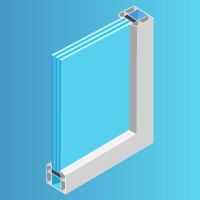
uPVC frames are popular for being affordable, durable, and low maintenance. They offer excellent thermal efficiency, keeping your home warm in winter and cool in summer.
These frames are also available in various colours and finishes, including woodgrain effects, which give a more traditional appearance.
With their many benefits, uPVC frames are a smart choice for homeowners who want long-lasting, energy-efficient windows and doors.
Three main characteristics
- The cheapest option
- Last long
- Multiple colour choices
Aluminium
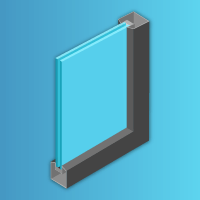
Aluminium frames are popular for conservatories because they are lightweight, sturdy, and corrosion-resistant.
These frames provide an enduring and contemporary appearance that you can customise with different colours to match your house's exterior.
Three main characteristics:
- Cost less than wood
- Minimal maintenance
- Strong
Wood
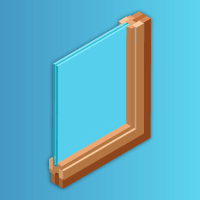
Wooden frames, for instance, offer a classic and warm aesthetic to any conservatory. Hardwoods like oak are popular for their durability and longevity, provided they receive regular maintenance to protect against weathering and decay. Wood is more expensive but offers excellent insulation.
Three main characteristics:
- Timeless design
- Rigid structure
- Good insulator
When deciding, consider the material's cost, maintenance requirements, and how well it complements your home. Evaluating the benefits of each material can help you make an informed decision and find the perfect fit for your lean-to conservatory.
If you're ready to explore the options available, request four free quotes today and create the perfect conservatory for your home.
Benefits of a lean to conservatory
Lean-to conservatories are growing in popularity among UK homeowners due to their numerous benefits. Here are the key benefits of choosing a lean to conservatory:
- Requires very little maintenance, allowing more time for enjoyment and less time worrying about upkeep
- Easy to install, making them a quick and easy option for adding extra living space
- Flexible designing options, able to suit various property styles from traditional to modern
- Offer additional functional living space to enjoy year-round, regardless of the weather outside
- Simple design, affordable, minimal construction requirements
- Best suited for modern homes, limited spaces and homeowners on a budget
A lean-to conservatory is a low-cost option that increases your home's value. It attracts potential buyers and provides a profitable investment. Everest suggests that depending on the size, execution, and materials used, you can expect a 7% increase in property value.
In sum, the benefits of choosing a lean to conservatory are vast and varied, from their low-cost investment to ease of installation and versatility in design. Lean to conservatories offer an efficient way to enhance your living space, and add value to your property.
Disadvantages of a lean to conservatory
Although lean-to conservatories have a reputation for being straightforward and cost-effective, they have certain limitations compared to other conservatories.
- The simpler design may not appeal to those who want a more distinctive conservatory profile
- The single-sloped roof may limit natural light compared to conservatories with glass roofs or complex designs that allow for more windows
- The single-sloped roof may limit natural light compared to conservatories with glass roofs or complex designs that allow for more windows
- Less fancy, may not be appropriate for older properties, and has limited overhead space
Despite these drawbacks, lean to conservatories remain popular for their low-cost investment and practicality.
Are you worried about the downsides of having a lean-to conservatory in your home?
By comparing quotes, you can confidently construct a lean-to conservatory using tradespeople's options based on price, skills, and experience.
Use our four free quotes request below to save time, money and guesswork.
How much does a lean to conservatory cost?
On average, a lean to conservatory cost ranges from £7,000 to £10,000 for a size measuring 3.5m x 2m to 3m x 3m. The estimated cost is based on supply only and does not include base, dwarf walls, or installation.
For fully fitted lean to conservatory prices, you can expect to pay around £10,600 and upwards. The estimate includes the cost of building a 3.5m x 3.5m lean-to with dwarf walls, an uPVC frame, and a polycarbonate roof, as well as installation and VAT.
In the table, we’ve outlined the prices for supply-only full-height lean-to conservatories, inclusive of VAT
| Size | Roof & frame materials | Cost (£+VAT) |
|---|---|---|
| 3m x 2m | Polycarbonate | uPVC | £6,000 - £7,000 |
| 3.5m x 2m | Polycarbonate | uPVC | £7,000 - £8,000 |
| 3m x 3m | Polycarbonate | uPVC | £8,000 - £10,000 |
| 4m x 3m | Polycarbonate | uPVC | £7,500 - £8,500 |
| 5m x 3m | Polycarbonate | uPVC | £5,650 - £12,350 |
| 6m x 3m | Polycarbonate | uPVC | £10,000 - £15,000 |
Lean to conservatories cost will depend on size, roofing, frame materials, installation cost and VAT inclusion.
Also, where you live can affect the cost of a lean-to conservatory, as can whether you already have a foundation.
We recommend getting quotes from multiple suppliers and contractors for an accurate estimate. This can help you work within your budget and even find cost-saving solutions for your lean-to conservatory.
Remember to factor in permission fees, building regulations, and installation costs when planning your conservatory project.
Overall, a lean-to conservatory can be a great addition to your home, providing extra space and natural light. Consulting with professionals ensures your conservatory project is within your budget and meets your expectations.
Get the best lean to conservatory prices

Turning your dream of a stunning lean-to conservatory into a manageable project is possible with the right approach. By comparing quotes, you can secure the best conservatory prices that match your budget and expectations.
Our service saves you time, money, and guesswork by offering four free quote requests to help you find trusted professionals specialising in conservatory projects.
Our quote request service helps make your dream of a lean-to conservatory a reality without the pain of market navigation.
Whether you're planning or about to begin construction, now is the ideal moment to seize this opportunity.
Request your four free quotes now and enjoy a lean-to conservatory's added space and beauty.
- Describe your needs
- Get free quotes
- Choose the best offer
It only takes 30 seconds

FAQ
Usually, you don’t need planning permission for a lean-to conservatory unless you live in a conservation area or your property is a listed building. However, you will need to comply with building regulations.
A lean-to is cheaper than other conservatory styles, as it’s the simplest design requiring the least work. Lean-tos are ideal for smaller areas, allowing you to choose smaller lean-to sunrooms perfect for limited garden space.
If you already have a patio, you won’t need a foundation for your lean-to conservatory; you can simply build it onto the deck. If not, you will need a foundation for stability and compliance with building regulations.
Building a lean-to conservatory can range from £6,000 – £15,000, depending on size, material choices, design complexity, and even where you live. We recommend contacting professional installers for accurate prices by requesting a quote.
Yes, you can put a solid roof on a lean-to conservatory. However, these materials are costlier and heavier but more energy-efficient and durable, blending seamlessly into your house design.

Rousanna is an SEO content writer at Household Quotes with a background in digital marketing and copywriting. She creates informative, well-researched home improvement content based on practical ideas to help readers make informed decisions.
- Lean To Conservatory: Your Complete Guide
- What are Lean-to conservatories?
- Lean to conservatory roof options
- Material options for lean to conservatory frames
- Benefits of a lean to conservatory
- Disadvantages of a lean to conservatory
- How much does a lean to conservatory cost?
- Get the best lean to conservatory prices
- FAQ
